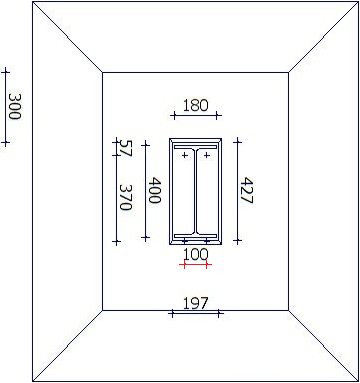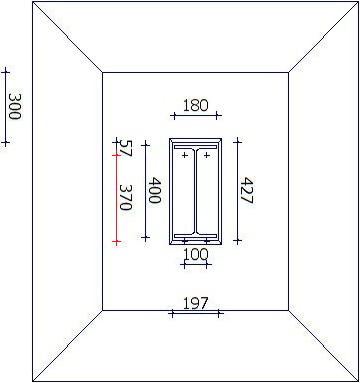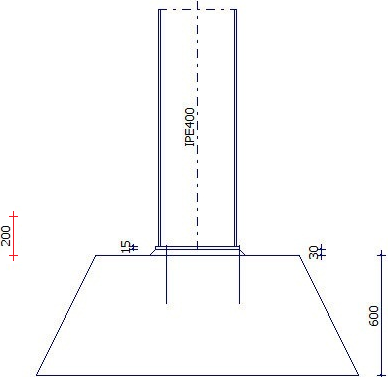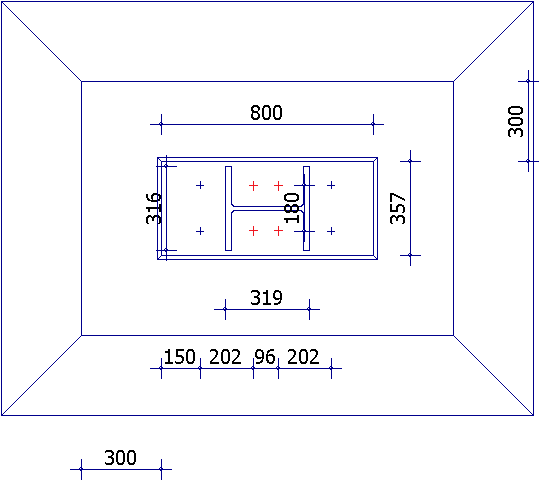The Anchors part is used for setting the anchor parameters of the Column-Base joint connection model.
Anchor parameters:
- size
- quality
- horizontal distance between anchors:

- vertical distance between anchors and plate edges:

- thread type (rolled, cut): the setting shows does the anchor bolt thread comply with EN 1090 requirements (Rolled) or not (Cut); according to the NEN-EN 1993-1-1 article #3.6.1(3), if the thread does not comply with EN 1090 requirements the tension strength of the bolt must be reduced by ratio 0.85
- concrete cover:

- anchors options:
By default the Column-Base joint connection is supported by two anchor rows. There is a single anchor row for all axial and shear forces (bending moments are not available). The additional anchor row, in the center, is intended for shear force. Two anchor rows for tension may be applied to the structure only if it corresponds with the condition of the endplate geometrical parameters and the anchor placement: the endplate height (see Plate & stiffeners) should be larger than the height of the column cross section (see General) and the anchors should be placed outside the column. Two anchor rows for tension:

Proposal is used for determining the optimal logical values of parameters and measurements of the structure elements as well as the optimal arrangement of these elements from geometrical point of view (not based on UC's). Proposal offers the optimal allowed modification of the construction model by making any necessary changes to the data entered by the user.